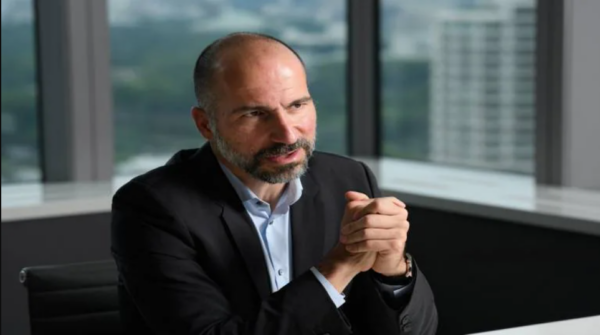Uber CEO Dara Khosrowshahi disclosed to The Wall Street Journal that he spent several months posing as an Uber driver and delivery agent in order to better understand and resolve their issues. Beginning in September 2021, Khosrowshahi spent months in San Francisco transporting passengers and delivering UberEats orders. During his time as an undercover Uber driver, the CEO of the ride-hailing service was penalized by the app for rejecting routes, tipped-baited by customers, and encountered a number of other obstacles that helped him understand the challenges that drivers face.
Dara Khosrowshahi implemented several adjustments at Uber using his experience as a covert driver.

The WSJ report explained that Uber began to confront a deficit of drivers in the United States after the economy began to recover in 2021. The labor shortage caused by the pandemic meant that for the first time ever, the transport hailing service had more passengers than drivers.
Investors simultaneously exerted pressure on Khosrowshahi to increase profits. Even as Uber struggled to meet the increased demand for taxis and food delivery orders post-pandemic, his decision to set aside $250 million in incentives to recruit more drivers was questioned.
Uber was aware that it needed to do more to recruit drivers. In the past, the company has been criticized for its unfair treatment of gig employees, and Uber drivers in various locations around the globe have demanded improved pay and policies. The design of the program has been criticized for being hostile to drivers.
Khosrowshahi started his career as an Uber driver by purchasing a used Tesla and operating under the alias “Dave K.”

First, he encountered difficulties with the sign-up procedure, which was distinct for drivers and food-delivery employees. The CEO of Uber characterized the sign-up process as “fairly cumbersome,” and Uber subsequently implemented a streamlined sign-up procedure. Now, drivers can switch between delivering food and transporting passengers.
He realized that another, larger issue was one that Uber drivers have long complained about. Before accepting a journey, drivers are not shown the rider’s drop-off location and estimated remuneration. Few chauffeurs with high acceptance rates are informed of the trip’s location in advance.
“When Mr. Khosrowshahi attempted driving, he rejected some journeys, and the app punished him by removing his ability to see upcoming destinations in advance,” according to a WSJ report. “The experience was so aggravating that he requested his team to expedite the schedule so that all U.S. vehicles could view their destinations in advance and without restrictions.”
Dara Khosrowshahi told The Wall Street Journal that he spent months undercover as an Uber driver and delivery agent to learn and solve their issues.
As a delivery driver, Khosrowshahi was also subjected to tip baiting, in which consumers initially promised a larger gratuity but ultimately left a smaller one. Uber attempted to address the issue by prohibiting customers from changing the gratuity amount after delivery, but discovered that many customers simply stopped tipping. Uber is still working on a solution for this problem.
Khosrowshahi’s experience prompted him to implement or accelerate a number of changes at Uber, but he acknowledges that much work remains.
Initially, Uber believed that if it could entice wealthy chauffeurs, everything else would fall into place. The CEO’s undercover experience taught him that the company “had to fundamentally change how we created our product and do so quicker than the competition.”

